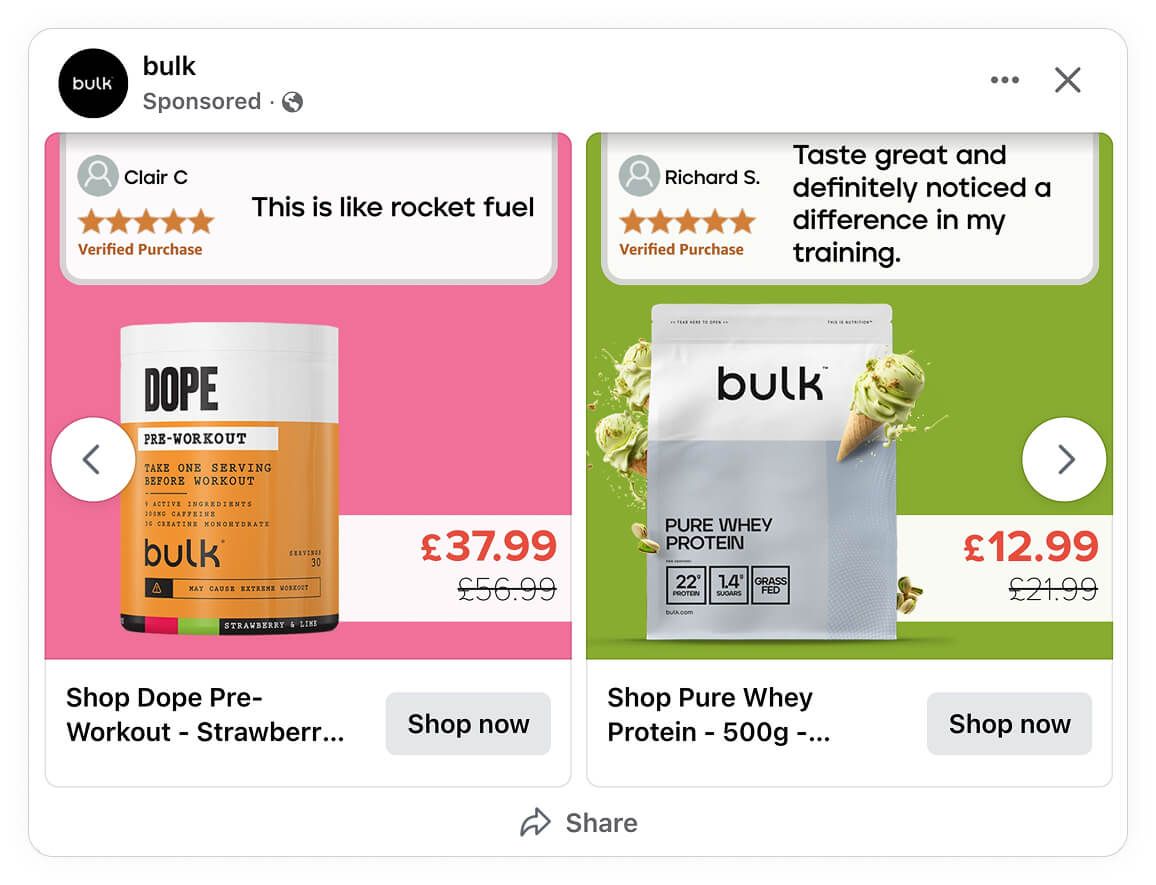User-generated content (UGC)
July 27, 2025
What is UGC?
User-generated content (UGC) is any type of content created and shared by users (as opposed to the brand) about a brand experience, product, or service. It’s usually shared on digital platforms like social media channels, review sites, forums, or blogs.
It can be text-only, like a testimonial, or visual, such as a photo or video. Whichever format is used, it’s typically based on a real-life experience that these users choose to share with others (and not necessarily the brand itself).
Common examples of UGC
UGC comes in various types of forms. Some of the most common examples of UGC are:
Customer reviews shared on platforms like Amazon, TripAdvisor, or Google
Unboxing videos shared on TikTok or YouTube that capture the first impressions of the product’s packaging and contents

Content submitted by customers to participate in a contest like a branded challenge
Social media posts that mention or tag a brand
Opinions shared in a community discussion on platforms like Quora or Reddit
Testimonials shared directly with the brand which then get repurposed on a landing page or paid ad
Why is UGC important in e-commerce?
Improved ad performance
UGC often boosts the ad performance by adding authenticity. It works especially well in Catalog Ads as it can make the product listings feel more relatable and engaging. Shoppers are more likely to interact with this type of content and buy the product, helping to improve the engagement and conversion rates.
Lowers marketing costs
Including UGC in your marketing campaigns is a cost-effective strategy. It helps to lower costs linked to content production as you don’t have to create your own content from scratch. In fact, if you find high-quality content that needs no editing, it can even work out free.
Builds brand trust
Consumers trust UGC more than brand ads. As it comes directly from real customers, it’s inherently more trustworthy. It also adds a level of openness and transparency that builds trust further as you’re willing to share customers’ unfiltered accounts.
Strategies for using UGC in marketing
Here are some ideas on how you can fit UGC into your marketing strategy:
Run a branded hashtag campaign that invites customers to share content using a unique branded hashtag
Highlight loyal customers in your email newsletter, blog post, or on an official social media page
Add customer content into cart abandonment emails to reinforce the value of those products
Display customer-submitted lifestyle photos on product pages
Best practices for using UGC in Catalog Ads
First ask permission
Before you repost or incorporate UGC into your ads, it’s best to ask the user’s permission first. It shows that you respect your customers and values their support. Most users will agree in exchange for being tagged or credited.
Credit the user
Even when the creator gave you permission to use their content, it’s best practice still to give credit to them. It also encourages other customers to share their experiences, helping you to generate even more UGC.
Curate the UGC carefully
Before you use any UGC in your brand’s advertising, you need to check the quality. While audiences respond well to UGC because it’s raw and unfiltered, it’s best to avoid low-quality videos or photos as it can negatively impact brand perception and trust.
Then, after you’ve eliminated any low-quality content, check that it aligns with your brand’s messaging, values, identity, and audience.
Challenges and mistakes to avoid when using UGC
Challenges of using UGC in your marketing strategy include:
You can’t fully control how your products will be portrayed in, for example, a branded hashtag contest.
It still requires considerable time to filter out off-brand, misleading, controversial, or downright inappropriate content.
You need to understand privacy and advertising regulations to ensure legal and ethical use. While cost-effective, it comes with legal risks such as potential copyright issues when the video, for example, features music.
Try Confect for Free
Confect can help you to create great-looking Catalog ads and Dynamic Product ads for Facebook, Instagram, TikTok, Snapchat and Pinterest.
